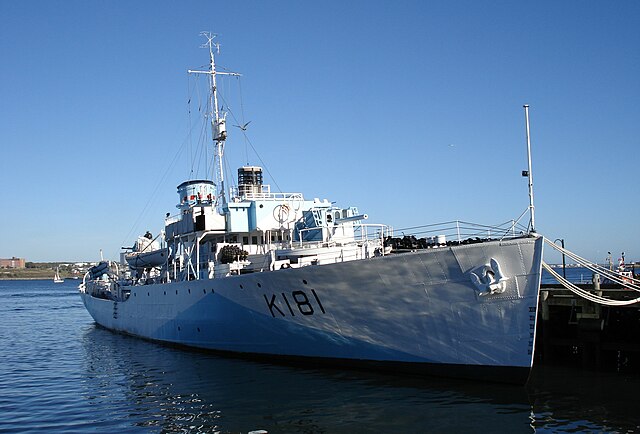HMS Hesperus was an H-class destroyer that had originally been ordered by the Brazilian Navy with the name Juruena in the late 1930s, but was purchased by the Royal Navy after the beginning of World War II in September 1939, commissioned in 1940 as HMS Hearty and then quickly renamed as Hesperus.
HMS Hesperus
HMS Hesperus showing bow damage on her return to Liverpool 28 December 1942, following a homeward-bound convoy escort, when she rammed and sank a German U-boat (IWM A13986)
Mid-Ocean Escort Force (MOEF) referred to the organisation of anti-submarine escorts for World War II trade convoys between Canada and Newfoundland, and the British Isles. The allocation of United States, British and Canadian escorts to these convoys reflected preferences of the United States upon United States' declaration of war and the organisation persisted through the winter of 1942–43 despite withdrawal of United States ships from the escort groups. By the summer of 1943, United States Atlantic escorts were focused on the faster CU convoys and the UG convoys between Chesapeake Bay and the Mediterranean Sea; and only British and Canadian escorts remained on the HX, SC and ON convoys.
HMCS Sackville, preserved at Halifax Harbour, is believed to be the only survivor of the MOEF Flower-class corvettes
United States Coast Guard cutter Ingham, shown here in a post-war configuration, is one of the few larger MOEF escorts to be preserved
USS Reuben James was sunk while escorting convoy HX 156
USS Benson was one of the modern United States destroyers initially assigned to MOEF and later diverted to escort troop convoys






